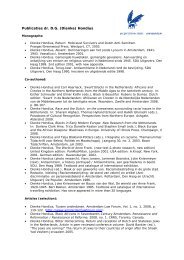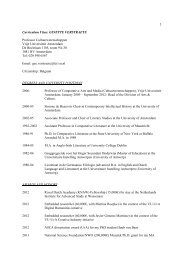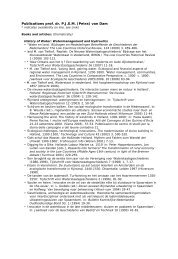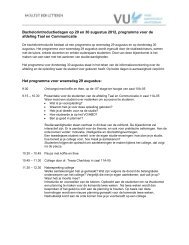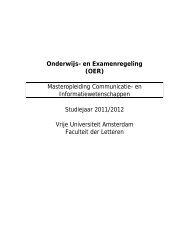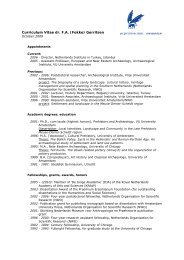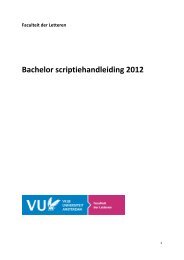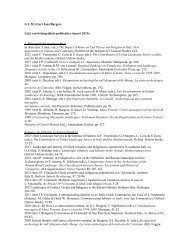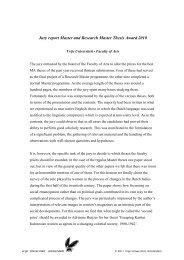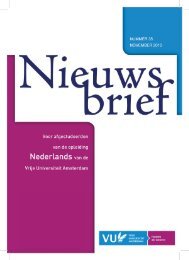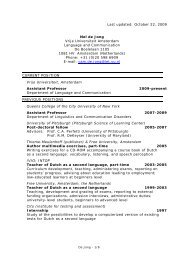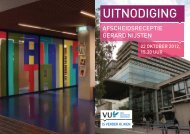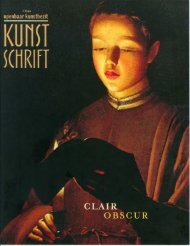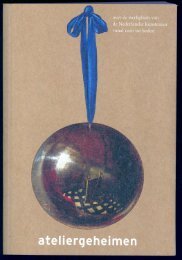You also want an ePaper? Increase the reach of your titles
YUMPU automatically turns print PDFs into web optimized ePapers that Google loves.
German version by Heinrich Ludwig of 1882. Yet I thmk that more recent,<br />
French verslons of the beginning of the twcntieth century would have appcalcd<br />
to him more. They were edited by the abovc-mentioned Joséphin<br />
Péladan who, like many other contemporary mystics and symbolists, had<br />
an exceptional aesthetic and historical admiration for Leonardo. He had<br />
shown this already in his earlier texts on art and mystical writings, in which<br />
hè also appearedas an advocate of the Ordre de la Rose + Croix+ Catholique,<br />
proposing Leonardo as its patron saint.26 Péladan was no stranger to Kandinsky<br />
who mentioned him in Ober das Geïsüge and who had paraphrased<br />
a statement by Péladan, 'Artist, thouartking' (Artiste, tuesroï) from atext<br />
of 1894 in which hè also rcferred to Leonardo.27<br />
Péladan followed up his small anthology of 1907 of Leonardo's texts including<br />
the passages on the depiction of the deltige and storms, by editing<br />
the first annotated French translatïons of Leonardo's treatise on painting<br />
and his discussion on landscape painting, that hè thought was a separate<br />
treatise.28 This was, incidentally, the year that Kandinskydecidcd to abandon<br />
the depiction of fairytale themes and turn instead to deluge and<br />
storms.<br />
The tone of Pcladan's introduction to Leonardo's treatise on landscape<br />
painting not only resembles that of Kandinsky's writings; it also comains<br />
similar aesthctic judgements. According to Péladan, no-one had summed<br />
up 'the l aws of the pure landscape' (les lois du paysage pur) as wel! as Leonardo<br />
had done in his treatise on landscape (includïng scènes of the deluge<br />
and storms), thus giving voice to 'clemental life and all that is cosmic' (la<br />
vie élémentaire et l'aspect cosmique). According to him Leonardo's treatise<br />
taught us to reaüze the mystery and divinity of natura! phenomena. In his<br />
short account of the aesthetics of landscape painting, hè thcn stressed that<br />
a landscape should always be imbued with a soul, praising the classical<br />
painters for this quality. In his view, they 'had such a deep understanding<br />
of nature, that they have given ït a soul and a person, pcopling it with invisible<br />
beings'.29 What rcally martered for Péladan was that each type of<br />
landscape gave rise to a different kind of emotion depcnding on the light,<br />
the colour range and the artist's sensïbility.30 Leonardo's text also demonstratcd<br />
how wrong it was to think that landscape was an easier genre than<br />
Tables et [...] histoires'. Kandinsky having toïled on his Composition VI<br />
would have applaucled this. And in his description of ïts creation Kandinsky<br />
too emphasized that making art is a matter of an effective organïzation<br />
of colours and tones rather than figurative representatïon.<br />
REPRODUCTIONS<br />
As said above. Kandinsky's curiosity must have concerned Leonardo's<br />
drawings just as much as his texts. Péladan's edïtions were nor much help<br />
KAND<strong>IN</strong>SKY'S COMPLETION OF LEONARDO'S DELUGE A_6l



